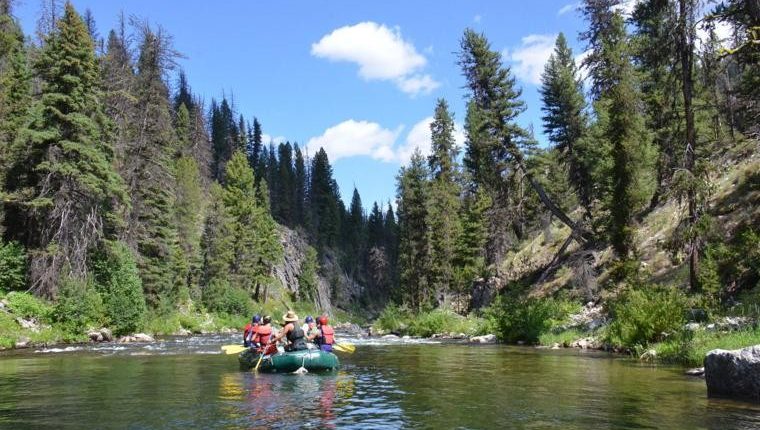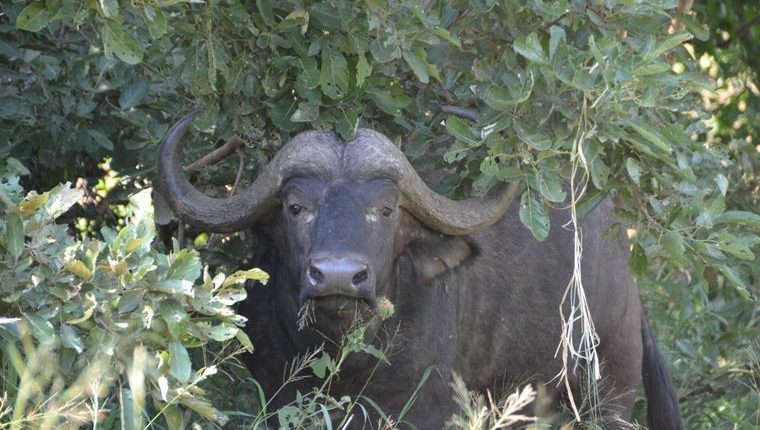The wild and scenic Middle Fork of the Salmon River winds its way through the largest wilderness area in the Continental U.S.: the Frank Church Wilderness Area in central Idaho. It is vast, majestic and ruggedly wild. Thousand-foot-tall side canyons plunge into the river. Steep, rocky and forbidding, they form a unique wilderness rafting experience.
Getting an individual rafting permit for the Middle Fork of the Salmon River is like winning the lottery. Considered one of the gems of the rafting world, applications for the limited number of summer rafting permits pour in from throughout the U.S. There are lots of applicants but few winners.
So Geoff Hogander and I decided to enjoy the luxury of a rafting company, Middle Fork Wilderness Outfitters, with roots to our hometown of Pocatello.
Owner and Guide Willis McAleese Jr. is a Pocatello native who made us feel right at home. We love to fish, and this trip added the benefit of McAleese’s expert fishing experience. He has guided raft trips and anglers for two decades down East Idaho waters.
What more could you ask for? A hundred miles of wilderness river to float, over 100 rapids, pristine country, crystal clear water with cutthroat, rainbow and bull trout. And a guide that knows how to catch them.
Strapped into life jackets, we all got the safety lecture, were shown where to sit on the rafts, paddle and how to use the inflatable kayaks. Everyone gravitated to the kind of whitewater adventure they wanted. Most days, Geoff and I chose the big rafts and fished off the back. One day, I did the inflatable kayak. No fishing, lots of bobbing and staring at stacked up whitewater waves. Hmm, fishing seemed like a really good option.
Stops each day along the river featured hikes to waterfalls, hot springs for a soak and cliffs with pictographs to marvel at. Willis and his guides were excellent interpreters of the time and tribes that left their history on the rocks. It is a holistic type of experience looking down at the river from where ancient artists scribed their trade painting sheep, wolves and people. The majesty of what laid before the artist brings the paintings to life.
Photography
The photographic opportunities on the river are excellent and endless. During the six-day trip, we snapped photos as we drifted, cascaded over rapids and swirled in deep pools. Overhanging cliffs with vistas of shimmering water were common. Canyons contrasting with blue and green waters flanked by massive granite boulders added depth to the size of the wilderness area.
Most of the group used their phone cameras. Yes, phone cameras. The camera optics in the new iPhone and androids are exceptional. Our group snapped photos of bald eagles, waterfalls, pictographs, hots springs, fishing, moments of laughter, camps and all sorts of vivid plants and rock formations.
Dining outdoors
The first dinner on the river set the stage. Shrimp wrapped in bacon with libations of your choice were starters. Salmon cooked over the open fire on cedar planks and a fresh green salad was paired with pasta. I loved the salmon topped with huckleberries.
The last night, tri-tip roast glazed and barbecued over the open fire and paired with a giant Idaho potatoes and all the toppings capped off the trip. Geoff and I chose a fine glass of red wine to accompany our meal. The topper was a dutch oven chocolate cake with chocolate frosting for a guest’s birthday. To celebrate, some brought along funny costumes featuring walruses and a marlin! A fun group of new friends.
Breakfasts ranged from eggs benedict to hot cakes with real maple syrup. Lunches were served on tables set on sandy beaches with an array of sandwich makings and a pasta salad. Pineapple and other fruits finished off lunch with a cookie the size of a small plate.
Fishing the Middle Fork
The most stunning aspect of fishing the Middle Fork is the miles and miles of fishable water. We averaged about 20 miles a day and cast a thousand times into riffs, seams and eddies that made you expect a strike with each cast.
One of the fishermen was a ringer. Willis McAleese Sr. joined us, and he is an excellent fly fisherman. He and his son cut their teeth fishing the Snake River out of Pocatello and they are good. He teamed up with his son and provided us with flies that worked and tutored us on how to fish the cliff edges, side pools and flat water. Our talents varied and catches of cutthroat trout and rainbows ranged from double digits to me getting skunked an entire morning.
I am not a fly fishing purist. So when I was getting skunked I broke out my mini spinning gear and at times out fished everyone but Sr. Other times they waxed me.
The raft crew
The rafting crew was a delightful mix of young and middle-aged individuals who love the river life. Geoff took a shine to Lara Sagatov, a 27-year-old raft guide with experience rafting many of Idaho’s rivers. He nicknamed her the River Goddess. All of the crew took turns at most of the tasks on the rafts and lifted ice chests and baggage till our arms would have revolted.
Personal time to reflect
The solitude, vast canyons, rock ledges dropping into the river help one reflect on who and where you are. Few places offer the experience I had the last evening of the trip.
Walking up the river a quarter mile from camp, I was casting a thumb-sized lure for cutthroat trout enjoying the evening. My luck was good, and I caught two 12- to 14-inch cutthroat and released them. Then I hooked into one of the native bull trout weighing about 2 pounds. It cut through the darkening waters putting up a fine fight. I took a photo of it, released it and sat down.
Not 15 feet away, watching me was an adult river otter, head propped out of the water next to the bank. I did not move. Dodging its head back and forth, it stood up on its hind feet looking at me. Probably wondering what nut of a fisherman would let dinner go. A minute later, a smaller, sleeker otter rose out of the water to eye me. The bigger otter found its footing and stood up looking at me. With a slight sound from the smaller otter, they slipped underwater and were gone.
A wonderful conclusion to a spectacular trip that slipped away too quickly.

